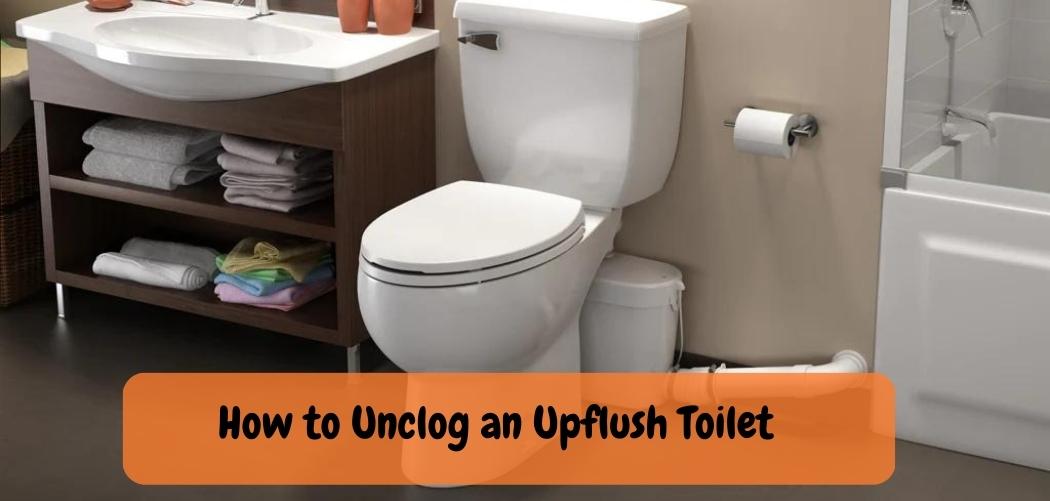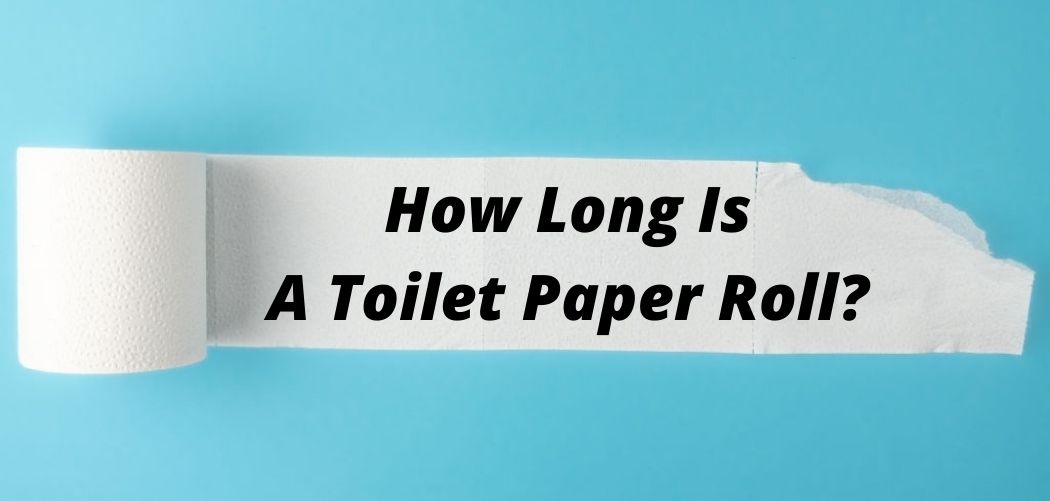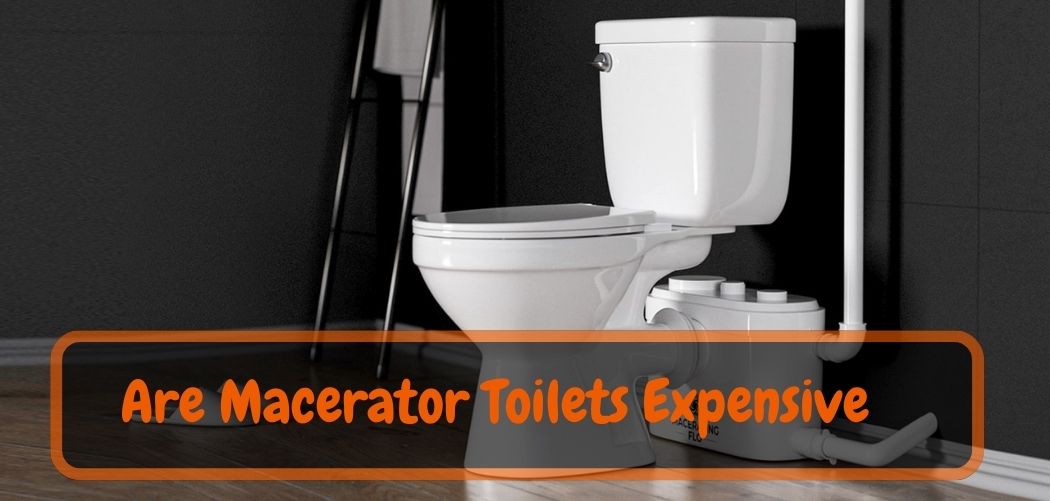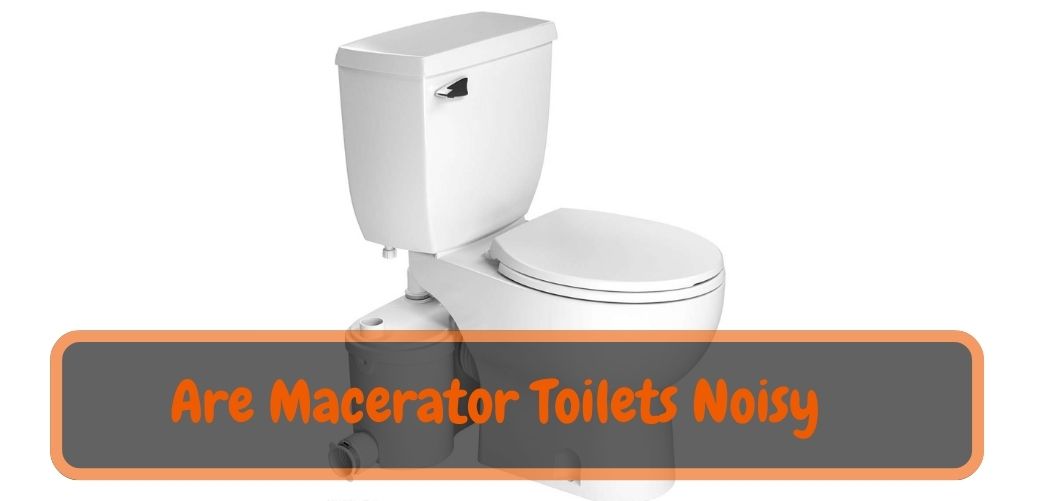Upflush toilets, also known as macerating toilets or grinder toilets, are a popular choice for bathrooms located in basements or other areas where traditional gravity-fed toilets are not feasible.
They work by macerating waste and toilet paper into a fine slurry, which is then pumped upward using an electric motor and discharged through a small-diameter pipe.
However, like any other toilet, upflush toilets can sometimes become clogged, causing inconvenience and potential plumbing issues.
In this guide, we will provide step-by-step instructions on how to unclog an upflush toilet, discuss common causes of clogs, and provide plumbing solutions.
Also read : Upflush Toilet Systems
Why Upflush Toilets are Prone to Clogs?
Upflush toilets are more prone to clogs compared to traditional gravity-fed toilets due to the nature of their operation.
The macerating unit in an upflush toilet has blades or grinders that chop up waste and toilet paper into a slurry, which is then pumped through a narrow pipe. However, these blades or grinders can become dull over time, and the pump can lose its efficiency.
Additionally, upflush toilets are typically connected to smaller-diameter discharge pipes compared to traditional toilets, which can easily become clogged with debris, causing backups and clogs.
Common Causes of Clogs in Upflush Toilets
1.Excessive toilet paper:
One of the most common causes of clogs in upflush toilets is the use of excessive toilet paper. Unlike traditional toilets, upflush toilets have smaller discharge pipes, and using too much toilet paper can easily overwhelm the macerating unit and cause clogs.
2. Foreign objects:
Flushing foreign objects such as feminine hygiene products, wet wipes, or paper towels down an upflush toilet can lead to clogs. These objects do not break down easily and can get stuck in the macerating unit or the narrow discharge pipe, causing clogs.
3. Build-up of solid waste:
Over time, a build-up of solid waste can occur in the macerating unit or the discharge pipe, especially if the blades or grinders are not functioning properly. This can lead to clogs and backups.
4. Hard water deposits:
Hard water deposits can accumulate in the macerating unit or the discharge pipe, reducing the efficiency of the pump and increasing the risk of clogs.
Also read : 10 Best Upflush Toilet
How to Unclog an Upflush Toilet?
Unclogging an upflush toilet requires careful attention and following these steps:
Step 1: Turn off the power – Before attempting to unclog an upflush toilet, always turn off the power to the macerating unit to avoid any potential hazards.
2 Step: Remove excess water – If the toilet bowl is full or partially filled with water, use a plunger or a toilet auger to remove as much water as possible to prevent spillage when working on the clog.
Step 3: Inspect and clean the macerating unit – Open the macerating unit and inspect it for any visible clogs or debris. Carefully remove any clogs or debris using a plunger or a long-handled brush. Clean the macerating unit with a non-abrasive cleaner to remove any hard water deposits or build-up.
Step 4: Check the discharge pipe – Inspect the discharge pipe for any clogs or debris. If the pipe is clogged, use a plumber’s snake or a flexible plastic drain snake to remove the clog. Avoid using harsh chemicals or drain cleaners as they can damage the pipes and the macerating unit.
Step 5: Test the toilet – After clearing the clog, reassemble the macerating unit and turn on the power. Flush the toilet to test if it’s draining properly. If the water flushes smoothly without any backups or clogs, then your upflush toilet is unclogged and ready to use.
Plumbing Solutions for Upflush Toilet Clogs
1.Regular maintenance:
To prevent clogs in your upflush toilet, it’s essential to perform regular maintenance. This includes cleaning the macerating unit and the discharge pipe regularly, and avoiding flushing excessive toilet paper or foreign objects down the toilet.
2.Use toilet paper wisely:
Use toilet paper that is designed to break down easily, and avoid using excessive amounts. Flush only toilet paper and human waste down the toilet, and never flush items like wet wipes, feminine hygiene products, or paper towels.
3. Avoid harsh chemicals:
Harsh chemicals or drain cleaners can damage the macerating unit and the discharge pipe of your upflush toilet. Avoid using them to unclog your toilet, and instead, opt for mechanical methods like plungers, augers, or drain snakes.
4. Check the blades or grinders:
The blades or grinders in the macerating unit of your upflush toilet can become dull over time, reducing their efficiency and increasing the risk of clogs. Check them periodically and replace them if needed.
5. Address hard water deposits:
Hard water deposits can accumulate in the macerating unit or the discharge pipe, affecting the pump’s efficiency. Use a descaler or a mixture of vinegar and water to clean and remove hard water deposits from the macerating unit and the discharge pipe.
Also read : Best Upflush Toilet System for Bathroom
Tips for Stay Clogs free Upflush Toilet
Here are some additional tips to keep your upflush toilet clog-free:
1. Be mindful of what you flush:
Only flush toilet paper and human waste down the toilet. Avoid flushing items like wet wipes, feminine hygiene products, paper towels, or other foreign objects, as they can easily cause clogs in the macerating unit or the discharge pipe.
2. Use toilet paper designed for septic systems:
Choose toilet paper that is labeled as septic-safe or designed to break down easily in water. Avoid using thick or ultra-soft toilet paper, as they can be harder to break down and increase the risk of clogs.
3. Flush multiple times for larger waste:
If you need to flush larger waste, such as solid waste or a large amount of toilet paper, consider flushing multiple times in smaller amounts instead of trying to flush it all at once. This can help prevent clogs and ensure that the waste is properly macerate.
4. Educate household members and guests:
Make sure everyone in your household or guests who use the upflush toilet understands what can and cannot flushed down the toilet. Educate them about proper toilet etiquette and the potential consequences of flushing improper items.
5. Perform regular maintenance:
Regularly clean the macerating unit and the discharge pipe according to the manufacturer’s instructions. This can help prevent buildup and maintain the efficiency of the pump.
6. Install a lint and hair filter:
Consider installing a lint and hair filter in the discharge pipe of your upflush toilet to catch any hair or debris that may accumulate and potentially cause clogs.
7. Address water pressure issues:
Low water pressure can affect the efficiency of the macerating unit, potentially leading to clogs. If you notice a decrease in water pressure, address the issue promptly to prevent potential clogs.
8. Avoid excessive water usage:
Upflush toilets rely on water pressure to pump waste, so avoid excessive water usage during or immediately after flushing. This can help ensure that the waste is properly macerate and prevent clogs.
By following these tips and performing regular maintenance, you can help keep your upflush toilet clog-free and ensure its smooth operation. If you do encounter a clog despite your best efforts, refer to the steps outlined in the earlier guide to safely and effectively unclog your upflush toilet or consult a professional plumber for assistance.
How to unblock a toilet macerator saniflo that won’t flush.
Conclusion
Upflush toilets are a popular choice for bathrooms in basements, remodels, retrofits, additions, and temporary applications. However, they can be prone to clogs due to their unique operation and smaller discharge pipes.
Regular maintenance, cautious use of toilet paper, avoiding harsh chemicals, checking the blades or grinders, and addressing hard water deposits are important steps to prevent and address clogs in upflush toilets.
If you encounter a clog, follow the steps outlined in this guide to safely and effectively unclog your upflush toilet. If the issue persists or seems complex, it’s best to consult a professional plumber for further assistance.










